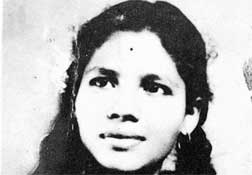About Court Verdict
“We could have dismissed the petition on the short ground that…the right to life guaranteed by Article 21 of the Constitution does not include the right to die,” observe Justices Markandey Katju and Gyan Sudha Misra sagely in the Aruna Shanbaug case. “However, in view of the importance of the issues involved we decided to go deeper into the merits of the case.” Negotiating the grey ethical areas relating to euthanasia in a humane, progressive, and persuasive way, this detailed Supreme Court judgment lays down a broad legal framework for dealing with a subject that has not received the attention it deserves from the legislature. The court's decision on the immediate matter at hand — the plea that Aruna Shanbaug, the nurse who has been lying in a vegetative state on a Mumbai hospital bed since she was brutally raped and strangulated in 1973, should be allowed to die — is largely based on medical evidence. The evidence furnished by a panel of experts showed that while Ms Shanbaug may be in a permanent vegetative state (PVS), she is neither brain dead nor in a coma. The court also went into the question of who could initiate the move to withdraw life support to a person in PVS. Its answer is that such decisions can be taken by parents, spouses, and close relatives or, in their absence (as in Ms Shanbaug's case), the “next friend.” Justices Katju and Misra held that her next friend was clearly KEM Hospital staff, “who have been amazingly caring for her day and night for so many long years,” and not the petitioner who urged that Aruna be allowed to die in dignity.
 Upholding
the distinction between active euthanasia, which involves
taking specific steps such as injecting a person with a
lethal substance, and passive euthanasia, which is
withdrawing medical treatment with the knowledge that it
will cause death, the court has held that the latter is
permissible in exceptional circumstances — for example, when
a patient is kept alive purely mechanically and when he or
she is “only able to sustain involuntary functioning through
advanced medical technology.” Citing a slew of international
case laws on the subject, the Supreme Court has laid down a
strict framework for the procedure to be adopted for
non-voluntary passive euthanasia until suitable legislation
is in place. All mercy-killing pleas should be heard by a
two-member bench of the appropriate High Court and decisions
may be taken only after seeking medical opinion from three
empanelled doctors, who must examine the patient, his or her
medical records, and also get the views of the hospital
staff. Leaving such decisions entirely to a patient's
relatives or doctors carries the risk that murders will be
carried out in the guise of mercy killing. In its judgment,
the court has struck a fine balance — it has shown great
sensitivity in handling the heart-rending case of Aruna
Shanbaug and her wonderful ‘next friend,' the KEM Hospital
staff, taken a progressive and empathetic view about dying
with dignity, but subjected it to exacting and rigorous
procedures.
Upholding
the distinction between active euthanasia, which involves
taking specific steps such as injecting a person with a
lethal substance, and passive euthanasia, which is
withdrawing medical treatment with the knowledge that it
will cause death, the court has held that the latter is
permissible in exceptional circumstances — for example, when
a patient is kept alive purely mechanically and when he or
she is “only able to sustain involuntary functioning through
advanced medical technology.” Citing a slew of international
case laws on the subject, the Supreme Court has laid down a
strict framework for the procedure to be adopted for
non-voluntary passive euthanasia until suitable legislation
is in place. All mercy-killing pleas should be heard by a
two-member bench of the appropriate High Court and decisions
may be taken only after seeking medical opinion from three
empanelled doctors, who must examine the patient, his or her
medical records, and also get the views of the hospital
staff. Leaving such decisions entirely to a patient's
relatives or doctors carries the risk that murders will be
carried out in the guise of mercy killing. In its judgment,
the court has struck a fine balance — it has shown great
sensitivity in handling the heart-rending case of Aruna
Shanbaug and her wonderful ‘next friend,' the KEM Hospital
staff, taken a progressive and empathetic view about dying
with dignity, but subjected it to exacting and rigorous
procedures.



